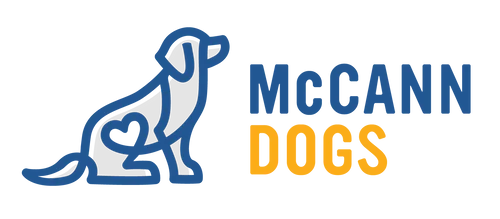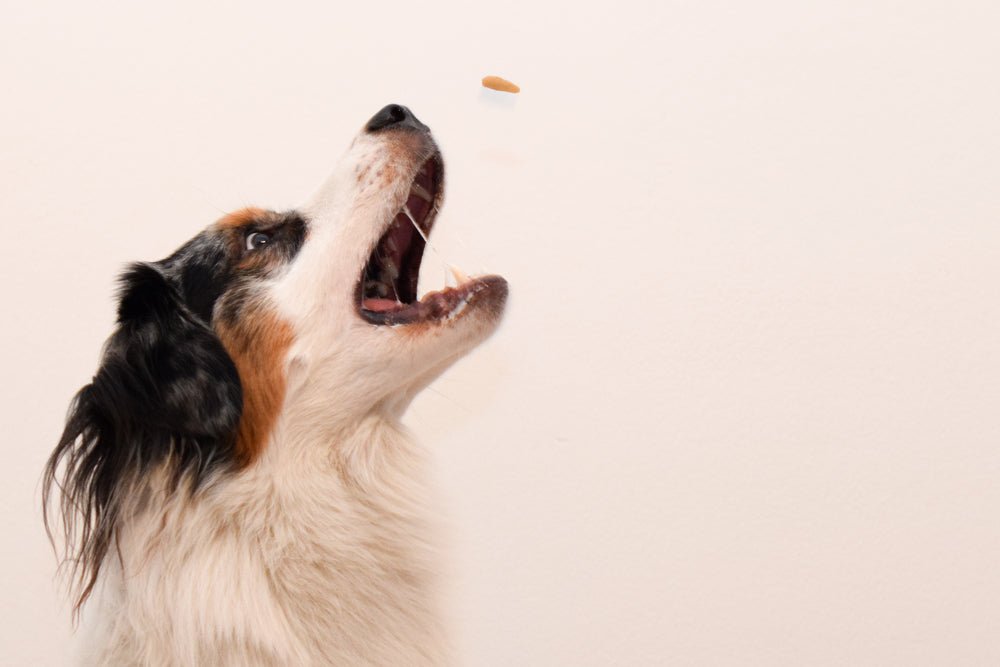![]() Listen to the Podcast
Listen to the Podcast
Do you feel like you have to bribe your dog with treats to get them to listen? Do you feel like food has failed you in training them? We couldn't agree more that having to have a handful of cookies to get your dog to listen is NOT the path to a well-trained dog.
However, like so many other things, when food fails in dog training, it's not due to some fundamental flaw in the science behind dog training, it's due to human error.
The proper way to use food in dog training
Food is meant to reinforce behaviours you like. Most dogs will eagerly work with food as their paycheck because it appeals to their base instinct for survival. The ideal scenario is that food is used to show behaviours in the initial stages of training only. After the dog has had the benefit of being shown what the expectations are, food should cease to be used as a lure, but should still be presented as a reward. Once a behaviour is ingrained, the reward schedule should become variable to build reliability in the behaviour.
The biggest problem that arises from people using food is that they don't always understand the difference between using it as a lure and using it as a reward. This is a crucial component to understand in order to take a behaviour from the teaching stage, to a reliable end product. If you aren't sure of the difference or when to use each, you'll likely end up with a dog who is dependent on seeing food in order to listen.
Food as a Lure in Dog Training
By definition a lure is "something that tempts or is used to tempt a person or animal to do something." So, if we use teaching a dog to 'sit' as an example:
1 - Show the dog how to sit by putting food on their nose and luring upward and slightly back
2 - When their rear touches the ground, mark with "YES" or a clicker
3 - Release the treat
After just a few repetitions, we want to move onto the reward phase of training.
Food as a Reward in Dog Training
The key to success in training is truly reliant on knowing how to make food a reward. By definition, a reward "is a thing given in recognition of one's service, effort, or achievement." It comes AFTER the behaviour has been offered. That really is the magic solution when training with food. While we may have to stack the deck in our favour by setting up our training scenarios, it's crucial that the luring phase is over and we quickly move onto the reward phase after we've had a chance to show our dogs what we're asking.
Using the same example of teaching a dog to sit, a reward looks like this:
1 - Ask the dog to sit using the same hand signal you offered, but this time, without food in your hand
2 - When their rear touches the ground, mark with "YES" or a clicker
3 - Reach into your pocket or bait pouch and produce their treat as a reward
And there it is. The secret to training a dog well with the use of food. They still get their paycheck, but it's not used to lure the behaviour. It's used to reward the behaviour. Now, it stops acting as a bribe and stops the dog from being reliant on seeing it in order to comply.
Once you've got the behaviour on cue, with rewards coming AFTER the successful sit, it's time to randomize your rewards.
Randomizing Rewards in Dog Training
Random or intermittent reinforcement is often described as the most powerful motivator on the planet. It builds behaviour far better than even continuous reinforcement. In continuous reinforcement, you would reward the dog every time they sat. In random reinforcement, you only reward the dog every few times - the schedule should be random and unpredictable. Sentient beings love to gamble and using a random schedule builds behaviour faster and holds it longer than even continuous reinforcement. Think about going to the casino. It's exciting because it's unpredictable. You pull slot machine handle and hold your breath in hopes that you'll get a payout. When you don't, you pull the arm again in hopes that the next time there's a win, or the next time, etc. It builds the desire to play and the excitement drives you to continue. Imagine sitting at a slot machine only to have it pay off every single time. The excitement would die pretty quickly. When was the last time you cheered when the bank machine spit out the money you requested? When was the last time you got excited about your trip to the bank machine? Continuous reinforcement doesn't build the same as desire as random reinforcement does.
Food Value in Dog Training
One final thought on training with food. If your dog is not food motivated, there are a couple of things you can do to change that.
Take an honest inventory of your dog's weight. If they are overweight at all, it may make them value food less. With the help of your vet, for many health reasons, you should try to get their weight down to a healthy range.
Make sure you are not free feeding your dog. They should not have access to food all of the time. If they do, switch them to scheduled meal times so that food holds more value.
Another tactic is to make a list of your dog's top 5 favourite rewards. The 5 treats he will do backflips for like steak, cheese, etc. are what I will use when teaching new behaviours. That way, I know it's something that will hold value for my dog. The steps above will then help you transfer that value to the behaviour.
Training with food is a great way to quickly teach your dog new skills. With the right information, you'll have a well trained dog who loves to work and listen to you.
As always, Happy Training!
|
|
Hi! I'm Shannon and I joined the McCann team in 1999 while training Quincey, my wonderful and spirited Rottweiler, to have good listening skills. I'm the Director of Online Training and Content for McCann Professional Dog Trainers and I enjoy writing about dogs and dog training for the McCann blog. I currently share my life with 2 Tollers (Reggie & Ned) and I love helping people develop the best possible relationship with their 4-legged family members. |


